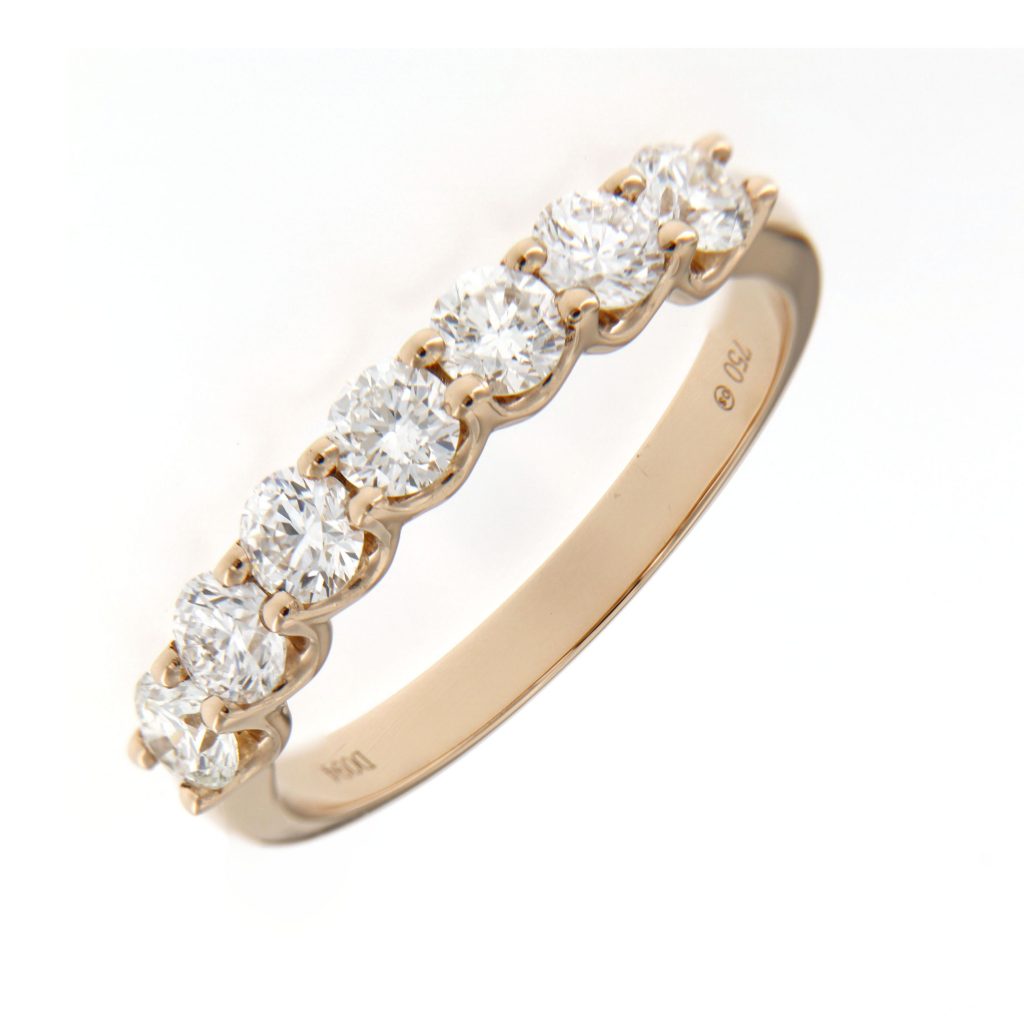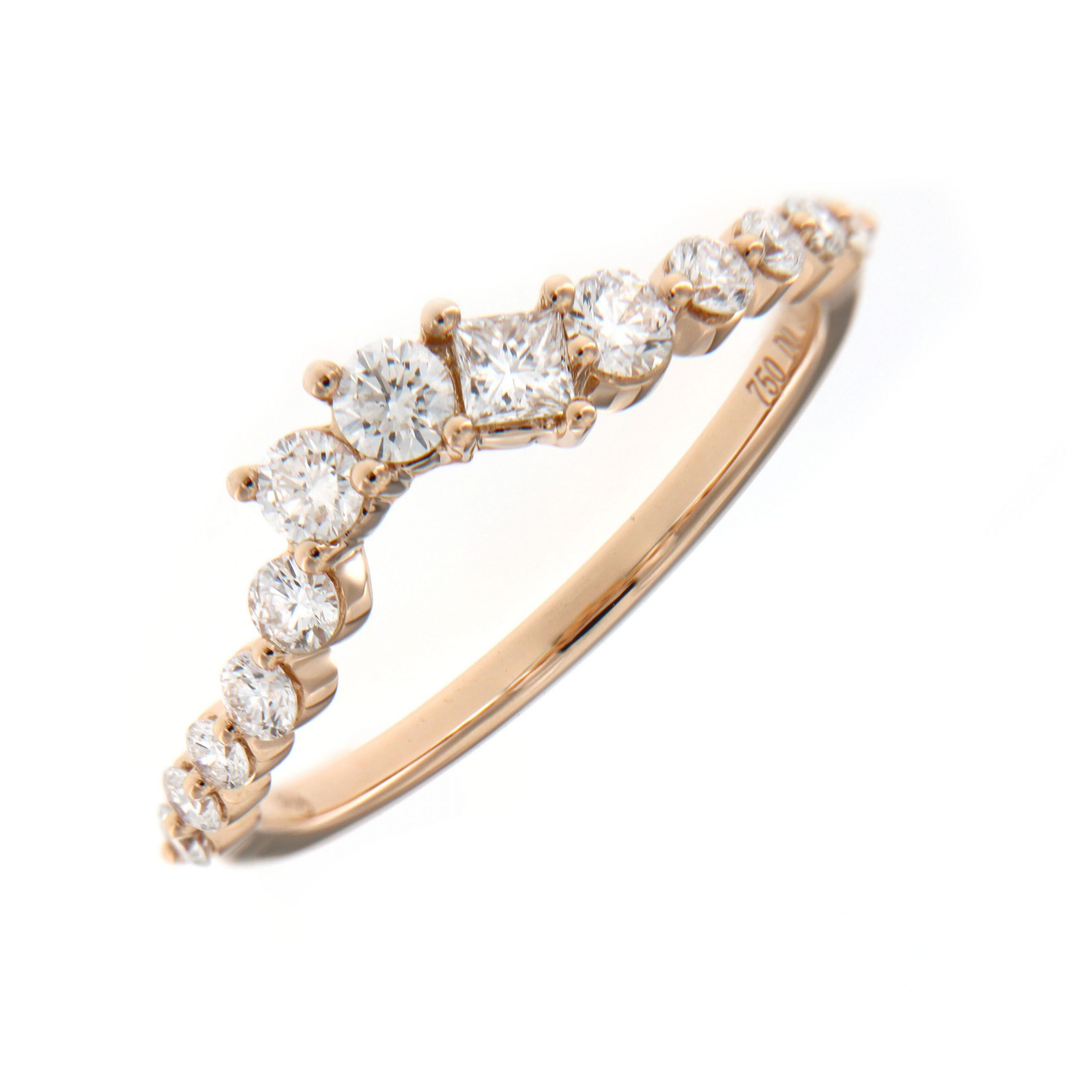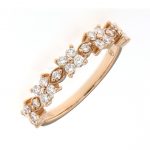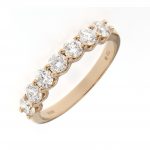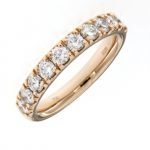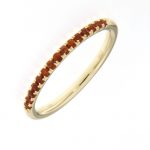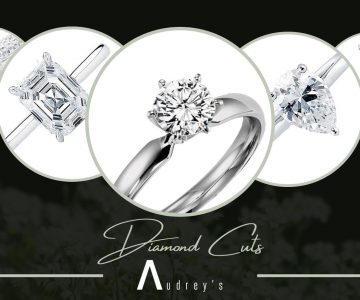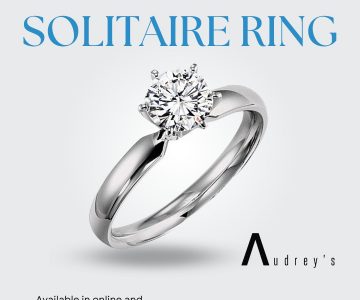Difference between 18K, 14K, 9K and platinum
- The other most important differences, which stem from the difference in purity, are in the price, durability, and color of 18K, 14K, 9K, as well as in whether they are actually considered gold.
- The second difference is the price. 9K gold contains more alloy metals than gold. Therefore, it is less expensive than 18K, 14K gold which contains more gold than alloy metals.
- Finally, you have to consider quality and value. 18K gold feels heavier and more substantial and luxurious to the touch than 14K and 9K gold does. Also, 18K gold items have more long-term and re-sale value than 9K gold.
Purity of 18K, 14K and 9K gold
- 9K gold is 37.5% pure gold
- 14K gold is 58.3% pure gold
- 18K gold is 75% pure gold
- 22K gold is 91.6% pure gold
- 24K gold is 100% pure gold
18K gold is significantly more expensive, as it contains twice as much pure gold as a 9K alloy, percentage-wise. Click here to see a selection of the newest and most popular 18K white and yellow gold jewelry.
Durability and Hardness
Gold is alloyed with other metals because it is very soft. You can expect lower-karat alloys to be harder than higher-karat ones because of the difference in their gold content.
As a low-purity gold alloy, 9K gold is harder than 18K gold. This means that a piece made of 18K gold will be relatively easier to scratch, and its parts will bend more easily.
9K jewelry, on the other hand, will take longer to wear out due to its greater hardness.
Color
Alloys with a higher gold content will have a color that is more saturated and yellow. In contrast, lower-karat alloys will look paler in comparison.
Compared with 9K pieces, 18K jewelry tends to have a richer color. So, if you are looking for a ring or bracelet that looks more like pure gold, 18 karats is the way to go.
9K jewelry is a recommended choice only if you don’t care much about color and if you put greater importance on price and affordability.
Platinum
Platinum is a dense, stable and rare metal that is often used in jewellery for its attractive, silver-like appearance, as well as in medical, electronic, and chemical applications due to its various and unique chemical and physical properties.
Platinum is more than ten times rarer than gold.
Total annual mine supply of platinum is around 250 metric tons.
The vast majority of platinum production in the world comes from South Africa and Russia.
It is also ductile, making it easy to stretch into wire, and unreactive, which means it doesn’t oxidize and is unaffected by common acids
Cons of platinum
- Platinum slightly softer and scratches easier than white gold alloys, very heavy, more expensive than 14k gold.
- The other important consideration with platinum, is its melting point. As it is much higher than gold, if you ever need to retip a claw or do work near the diamond, often the stones will need to be removed. This will add extra costs to any repair work that you might need to have in the future.

